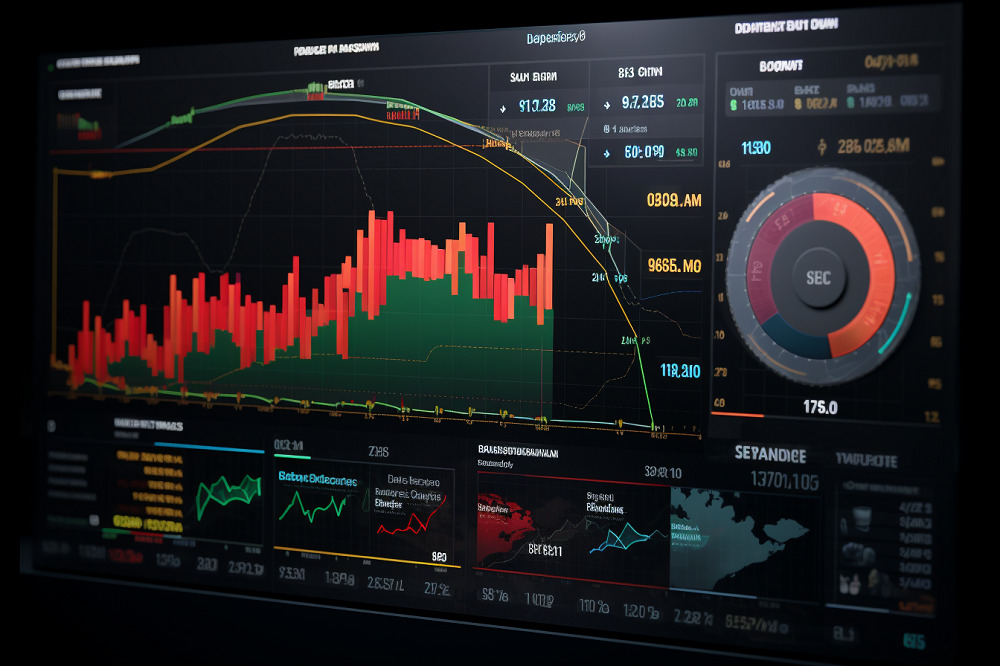Each trading period involves activities carried out by traders to harness the market’s potential, one of which is open interest. Market participants leverage open interest to know the number of futures contracts they hold. Hence, it is a vital tool to determine market sentiments and the reasons behind price trends.
What Is Open Interest?
Open interest refers to the total number of contracts that must be completed or offset through delivery. A futures contract represents an agreement between two parties to buy or sell an underlying asset at a defined price on or before a specific future date.
This metric contrasts trading volume, which measures the total number of contracts traded over a set period. Open interest is a crucial metric that analysts leverage to gauge the market mood and forecast potential price swings. It provides knowledge about present market conditions and future price movements.
A reduction in open interest may signal a declining trend, whereas an increase in open interest shows thriving market interest and long-term price trends.
Implications Of Open Market On Trading Shifts
Open interest is essential for traders to determine the market’s trend, offering critical information regarding price appreciation and depreciation periods. These concurrent price increases and increased open interest indicate the possibility of more price ascents, instilling confidence in an optimistic market environment.
In contrast, a bearish scenario is characterized by rising open interest and declining prices. Open interest changes must be analyzed to identify probable trend reversals.
A disparity between rising prices and dropping open interest indicates a weakening bullish support level, implying an oncoming reversal. Conversely, a drop in prices and open interest usually marks the beginning of a bearish trend’s losing intensity, raising the possibility of an upward reversal.
Open Interest Vs. Trading Volumes
Open interest and trading volume are essential indicators in the financial markets, providing unique perspectives on market activities. Trading volume is the total number of shares or contracts traded.
This metric represents the cumulative intensity of purchasing and selling operations over a specified period. It measures market liquidity and transaction speed. Nonetheless, the trading volume does not distinguish between newly acquired and existing holdings.
Instead, it only analyzes the total volume of transactions. Conversely, open interest quantifies the total number of active contracts in the market.
Unlike trading volume, open interest only refers to contracts that have yet to be completed regarding delivery or counter-trade offset. It represents participants’ continuous dedication and interest in the market.
Calculating Open Interest For Crypto Futures
Knowing the total number of active contracts is critical for calculating open interest in cryptocurrency futures contracts. This data provides valuable insights into market bias and potential trends.
It is worth noting that open interest fluctuates as new holdings are created or existing ones are rebalanced. For instance, Trader A buys Bitcoin (BTC) futures long, and Trader B sells Bitcoin (BTC) short. In this situation, the open interest in the contract grows by one contract.
Should Trader C get the same number of futures contracts from Trader B, the open interest will remain the same due to the contract’s simple transfer between the participating parties. Nonetheless, if Trader D enters the market and buys another Bitcoin futures contract, open interest increases by one.
Open interest movement in crypto futures indicates the involvement of active traders, the opening of new positions, and the emergence of market trends due to changes in participants’ commitments.
Strategies For Analyzing Open Interest
A common strategy in market analysis is to use open interest data to confirm, or question established pricing patterns. A trend will likely continue when prices and open interest rise simultaneously.
In contrast, a drop in open interest could indicate a loss of support for an upward trend. Thus, observing fluctuations in open interest and price movements is another helpful method. Divergences, which occur when changes in open interest and price movements diverge, suggest an impending trend reversal.
Drawbacks Of Open Interest In Crypto Futures
One inherent drawback of open interest is that it can’t be used as a standalone analytical tool. It isn’t sufficient to offer a comprehensive analysis of market dynamics.
Also, differentiating between position closures and new market activity is challenging because open interest changes can occur from the start of offsetting trades and the creation of new positions. Furthermore, the open interest data may be inaccurate in depicting the scale of significant interests held by institutional participants and provide no insight into the unique dimensions of individual positions.
Conclusion
The best way to make more informed decisions and achieve optimum results is to pair open interest data with other technical indicators. This comprehensive analysis makes identifying optimal entry and exit positions easier.
